From Scratch Sourdough Pie Crust
The quest for the perfect pie crust is often filled with trials, errors, and, eventually, delightful success. Well, let the quest end here. I think I’ve made the perfect pie crust from scratch–a sourdough pie crust. Sourdough brings a new depth of flavor and a wonderfully tender texture to this classic buttery pie crust.
Combining sourdough starter with high-quality butter, I created a flaky and flavorful crust, perfect for sweet or savory fillings.
The sourdough’s slight acidity not only contributes to the crust’s exquisite taste but also tenderizes the gluten, resulting in a perfect balance between crisp and tender texture. This sourdough pie crust is ideal for everything from classic apple pies to innovative savory tarts.
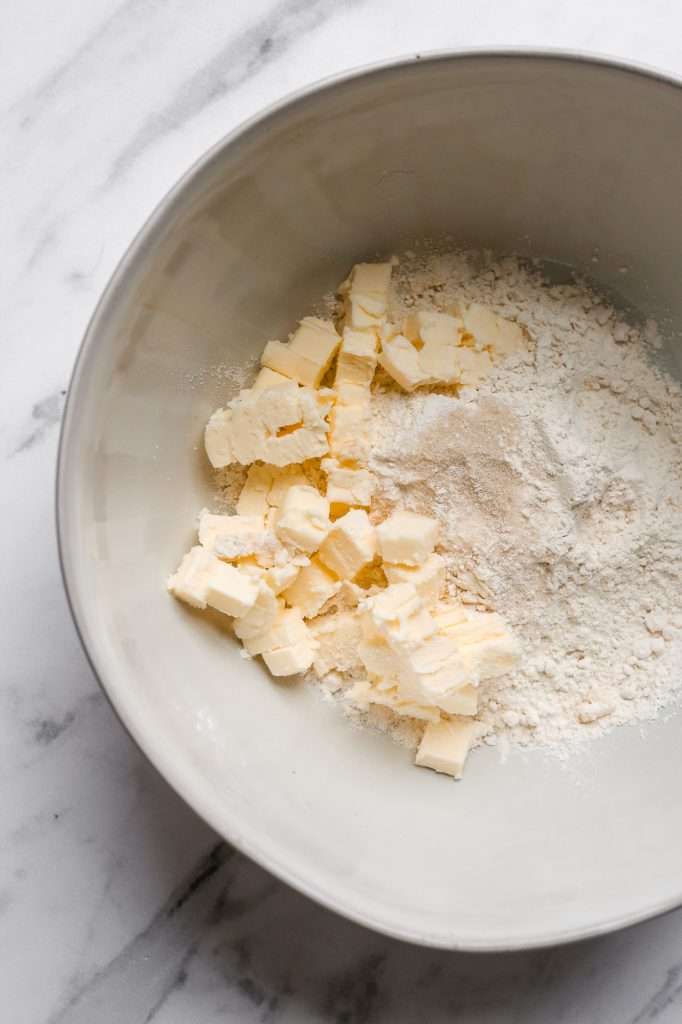
Ingredients and Supplies to Make Pie Crust From Scratch
Pie crust is ridiculously easy to make and requires only five ingredients.
- 140 grams organic all-purpose flour
- 113 grams butter, cubed (cold)
- 5 fine sea salt
- 5 grams granulated sugar
- 125g sourdough starter discard, cold
The key is to ensure your butter and sourdough starter are both cold before you begin.
For supplies, you will need:
- a rolling pin
- a kitchen scale
- plastic wrap
- 9-inch pie dish
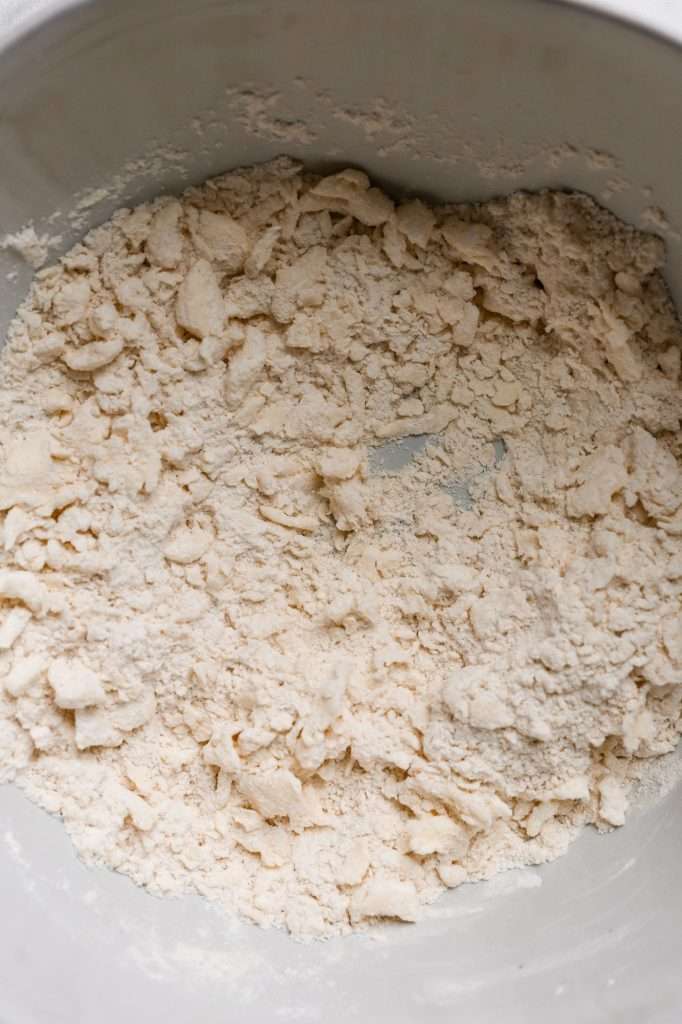
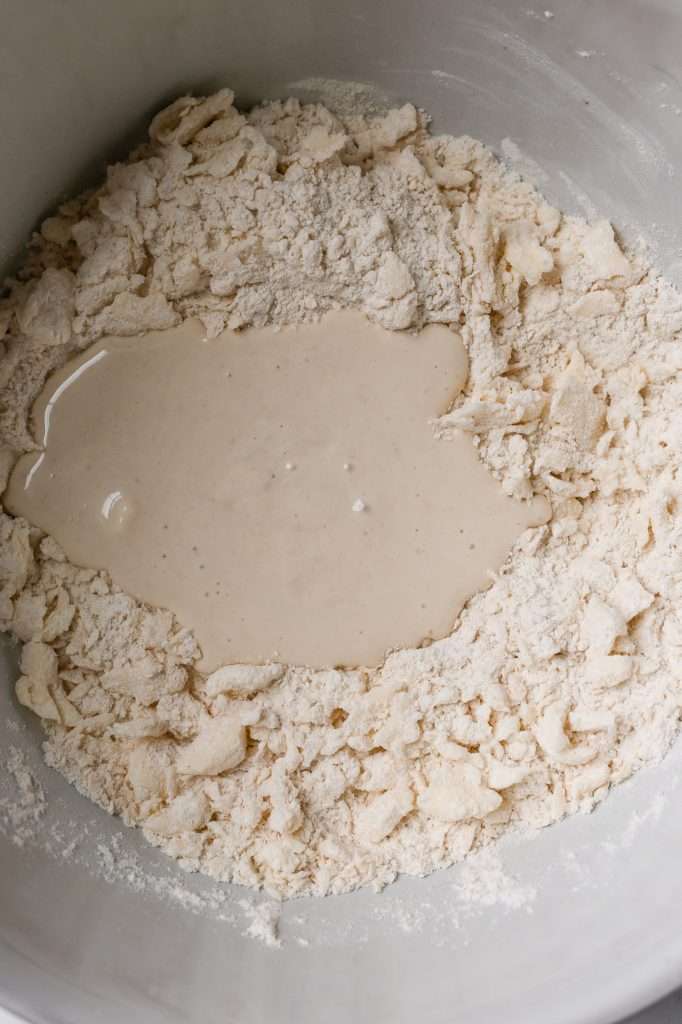
How to Store and Freeze Sourdough Pie Crust
Freezing homemade pie crust is a great way to save time and always have a crust ready for baking. Here’s how to freeze it effectively:
- Prepare the Dough: Make your pie dough according to the recipe below.
- Shape for Freezing: It’s best to freeze the dough before rolling it out, as this keeps it fresh and makes it easier to store. Form the dough into a disk about 1 inch thick. This shape makes it easier to roll out once it’s thawed.
- Wrap the Dough: Wrap the dough disk tightly with plastic wrap. Make sure it’s completely covered to prevent freezer burn. You can also put the wrapped dough in a freezer bag for extra protection.
- Label and Date: Label the dough with the date and type of pie crust. You can freeze homemade sourdough pie crust for up to 3 months without losing quality.
- Freezing: Place the wrapped dough in the freezer.
- Thawing the Dough: Transfer the dough from the freezer to the refrigerator when you’re ready to use it. Let it thaw overnight. Then, let it sit at room temperature briefly until it’s pliable enough to roll out.
- Rolling Out Thawed Dough: Roll out the dough on a lightly floured surface before placing it in your pie pan.
Remember, the key to freezing pie dough is to protect it from air exposure to prevent freezer burn. Freezing pie dough is a convenient way to plan ahead for baking projects.
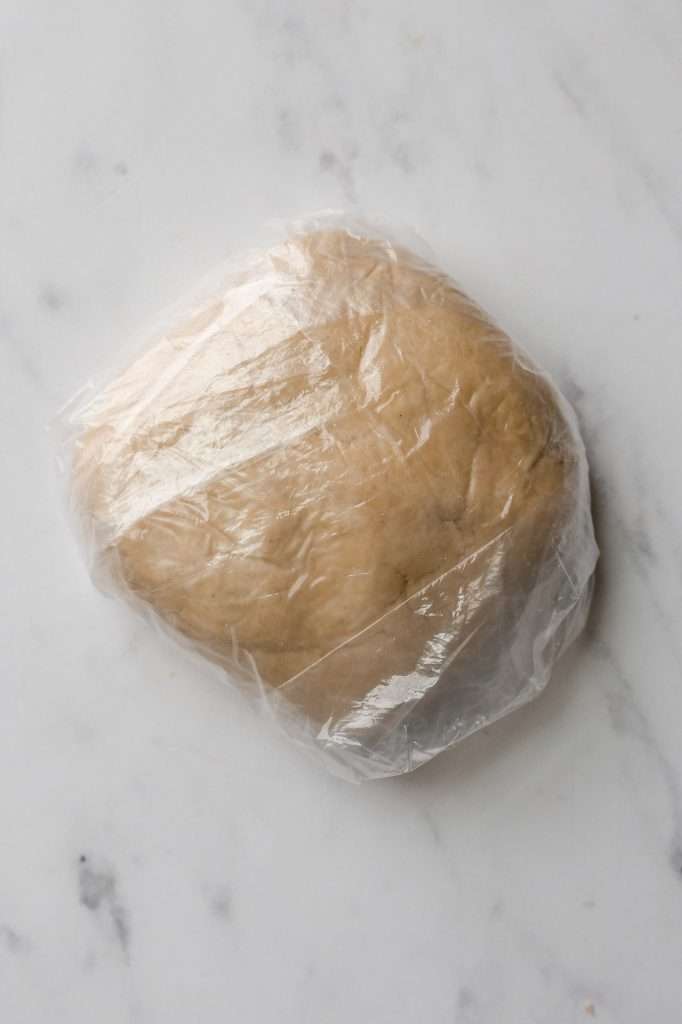
Pie Crust Tips
The sourdough starter used in this recipe is a 100% hydration starter. That means it is made of equal parts flour and water. If your starter is not 100% hydrated, you may need to make a minor adjustment.
If your pie crust isn’t coming together, add a tiny sprinkle of ice water to bring the dough together. It’s essential to use ice water.
All ingredients must be cold when making a pie crust to ensure the butter stays in pieces within the dough. These little bits of butter scattered throughout the pie crust dough produce a tender, flaky crust.
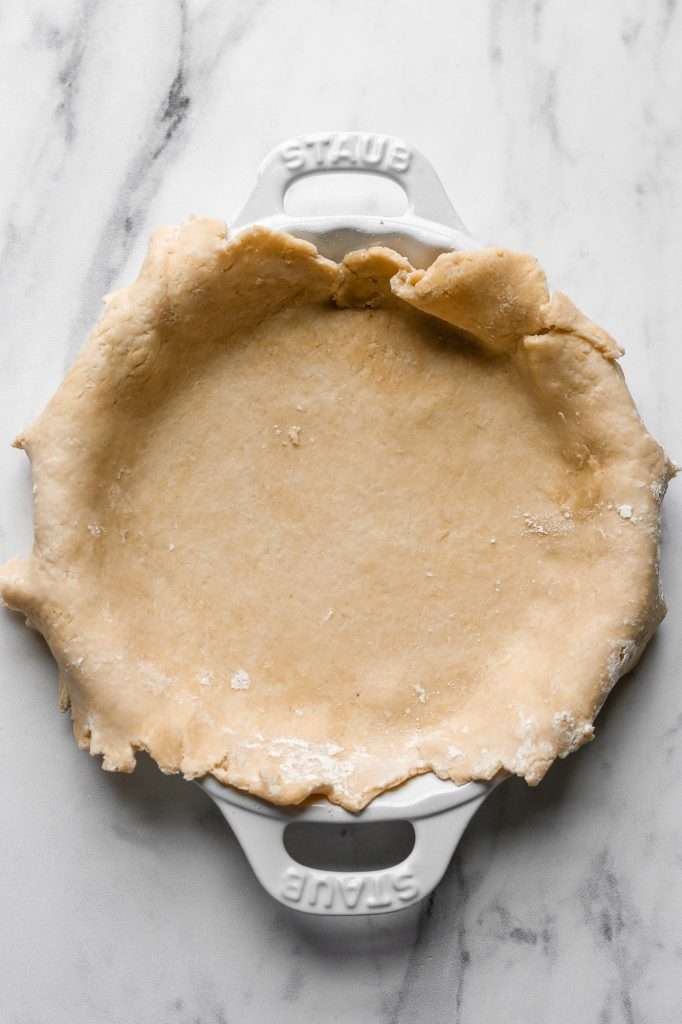
I’m always a little messy placing my pie crust in the dish. It’s never perfectly even. So, to adjust it, I start by trimming any excess hanging off the sides and then use that excess to press into any gaps or cracks around the side.

How to Blind Bake Sourdough Pie Crust
Blind baking a pie crust is used to pre-bake the crust before adding the filling, especially for pies with wet fillings or those requiring little to no baking. Here’s how to blind bake a pie crust:
- Prepare the Pie Dough: Roll out your pie dough and place it into the dish. Trim any excess dough from the edges and crimp them for a decorative finish.
- Chill the Crust: After shaping the dough in the pie dish, brush it with egg wash and chill it in the refrigerator for about 30 minutes. This helps prevent shrinking and distortion during baking.
- Preheat the Oven: Preheat your oven to the temperature specified in your recipe, typically around 350-375°F.
- Line the Crust: Line it with parchment paper once the dough is chilled. Ensure the lining covers the edges to prevent them from burning or browning too quickly.
- Fill with Weights: Fill the lined crust with pie weights. If you don’t have pie weights, you can use dried beans. These weights prevent the crust from puffing up or shrinking.
- Bake the Crust: Bake the crust with the weights for about 20-30 minutes or until the edges turn golden. The time may vary depending on the oven, so watch it.
- Remove the Weights: Carefully remove the pie from the oven, and then lift out the parchment paper with the weights. Be cautious, as they will be very hot.
- Cool the Crust: Let it cool before adding your filling.
Blind baking is crucial for certain pies, like custard pies, pecan pies, or quiches, where the filling doesn’t require as much baking time as the crust. It ensures that your pie crust is fully cooked and not soggy.
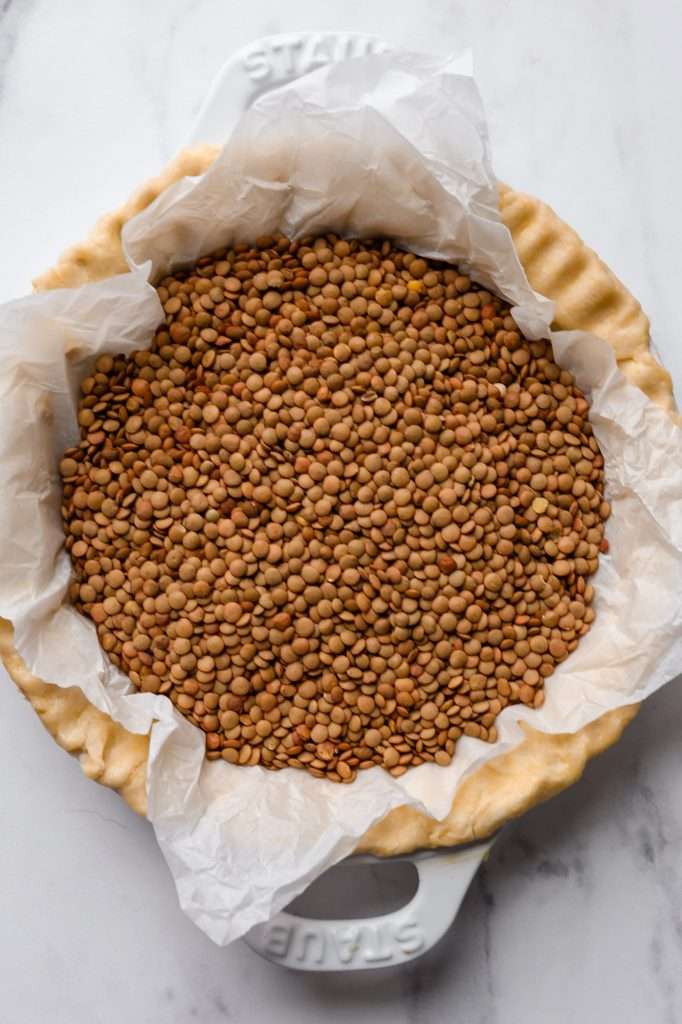
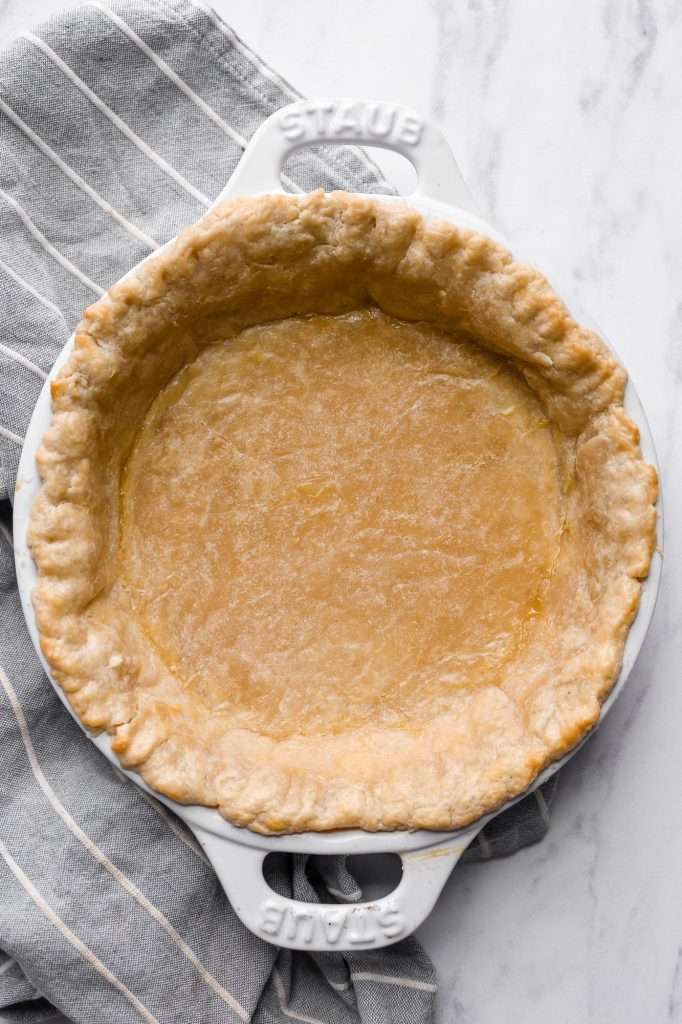
More Recipe to Try
- Brown Butter Chocolate Chip Pecan Pie (No Corn Syrup!)
- Sourdough Garlic Bread Dinner Rolls
- Sourdough Stuffing with Sausage, Mushrooms and Sage
- Miso Chocolate Chip Cookies with Brown Butter

Easy Sourdough Pie Crust From Scratch
This sourdough pie crust is buttery, flaky, and perfect for any pie. Easily made with sourdough starter, you can use this crust with sweet dessert pies or savory dinner pies.
- Prep: 10 minutes
- Cook: 20 minutes
- Total Time: 30 minutes
Ingredients
- 140 grams organic all-purpose flour
- 113 grams butter, cubed (cold)
- 5 grams fine sea salt
- 5 grams granulated sugar
- 125g sourdough starter discard, cold
Instructions
- In a large bowl, combine flour with salt and sugar.
- Work in the butter with a fork, be careful not to over-mix. It should be chunky and rough.
- Add in the cold sourdough starter and lightly knead until just combined into a dough ball.
- Shape the dough into a disk and wrap it in plastic wrap.
- Chill in the fridge for at least 2 hours or overnight.
- Sprinkle your clean countertop with flour and roll out the dough until it is approximately 12″.
- Drape it over a 9″ pie plate, without tearing it, gently press it into the plate, and smooth it out.
- Trim any excess crust from the edges and crimp the edges to the pie plate. (at this point you can wrap the crust and place it in an air tight container/bag and freeze it for later)
- Blind bake the crust using the following directions (or bake according to pie recipe directions).
- To blind bake: Chill for 20 minutes in the freezer (the crust will shrink if you do not chill it first).
- Preheat the oven to 350 degrees F. Line the chilled pie crust with parchment paper. Fill with dried beans or pie weights. Bake for about 25-30 minutes.
- Remove the pie crust from the oven and carefully lift the parchment paper with the weights out of the pie.
- Return to the oven for about 10-15 more minutes until golden brown.
- Allow to cool, then you can freeze the crust for later, or use it to bake a pie!
Notes
- If you need two pie crusts for your pie recipe, double the recipe.


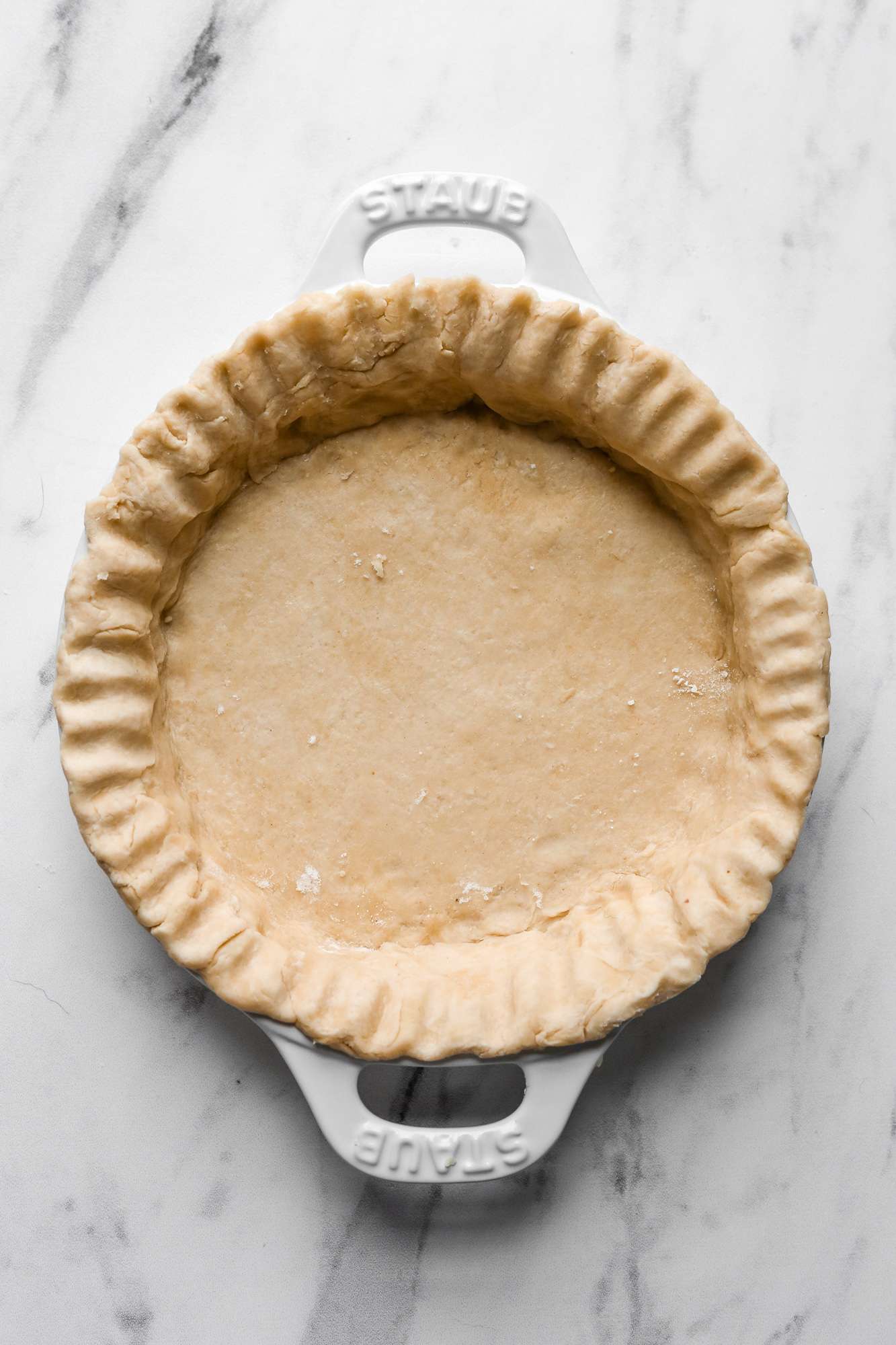


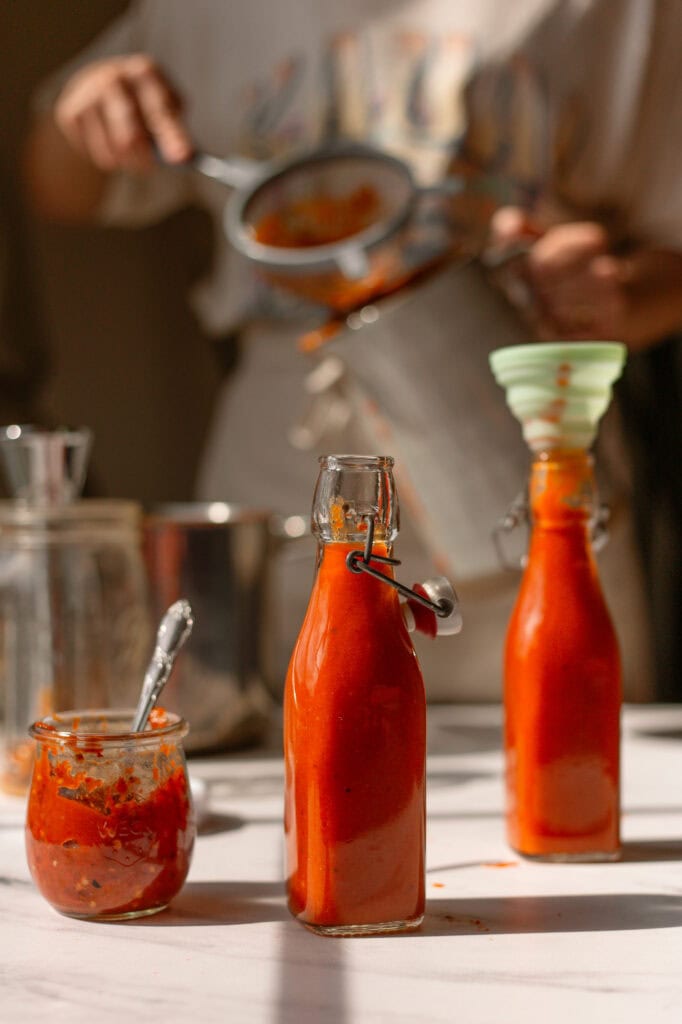


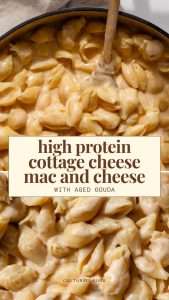

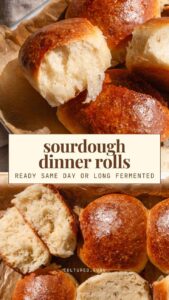
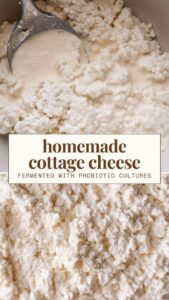
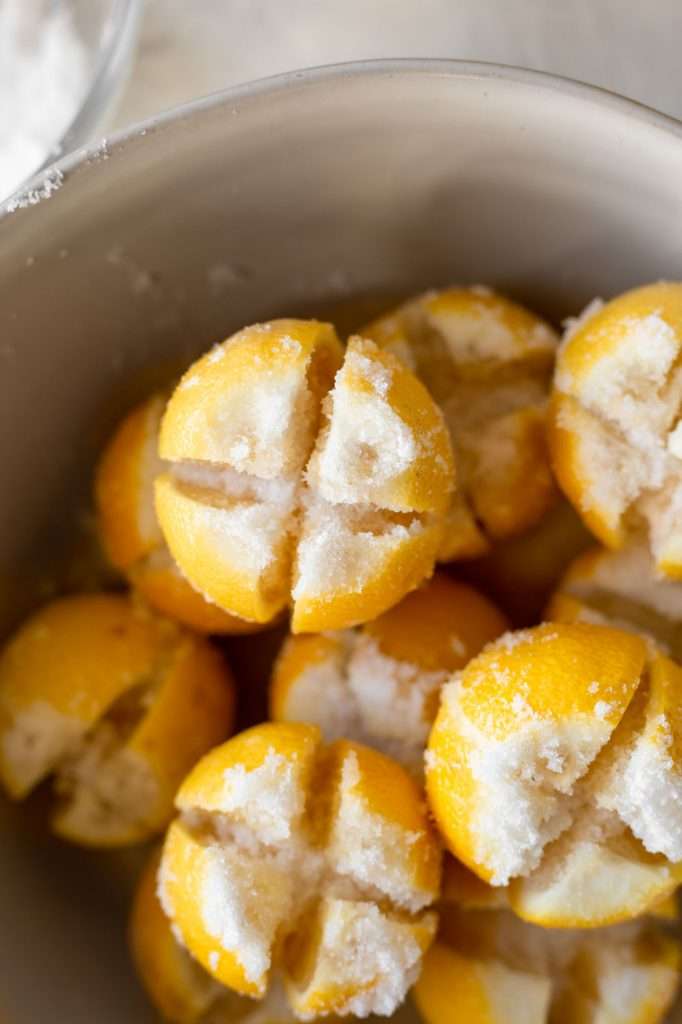
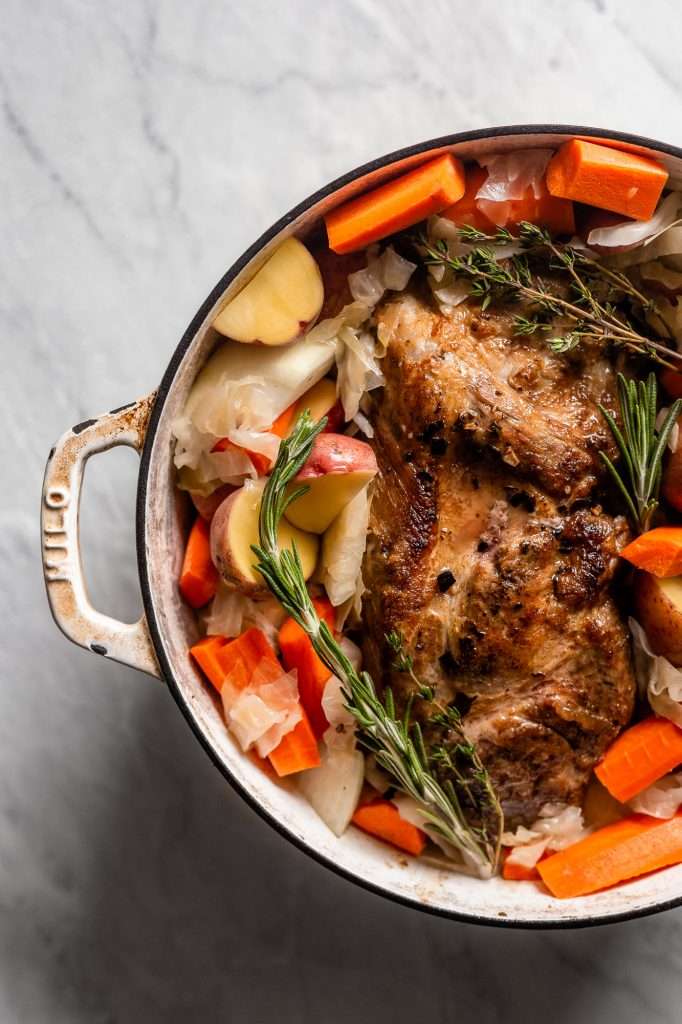
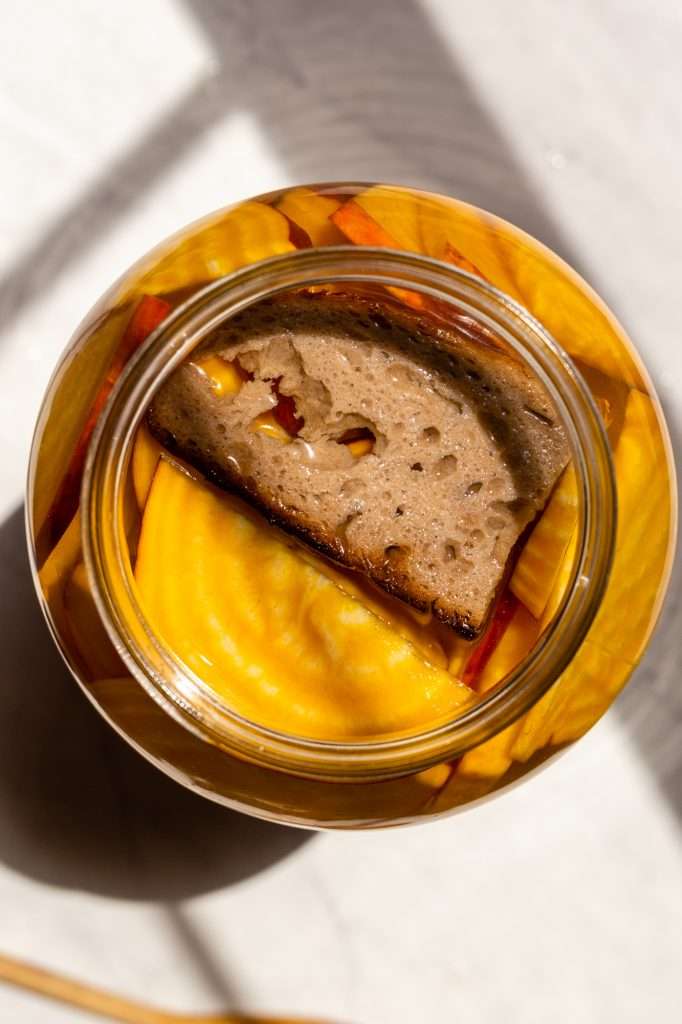
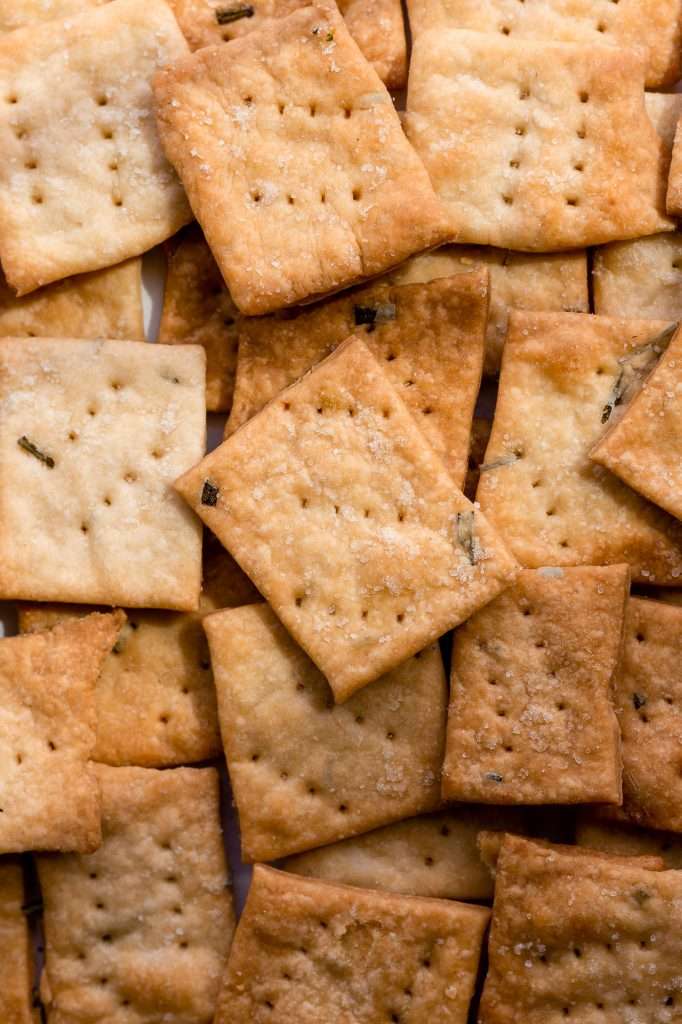
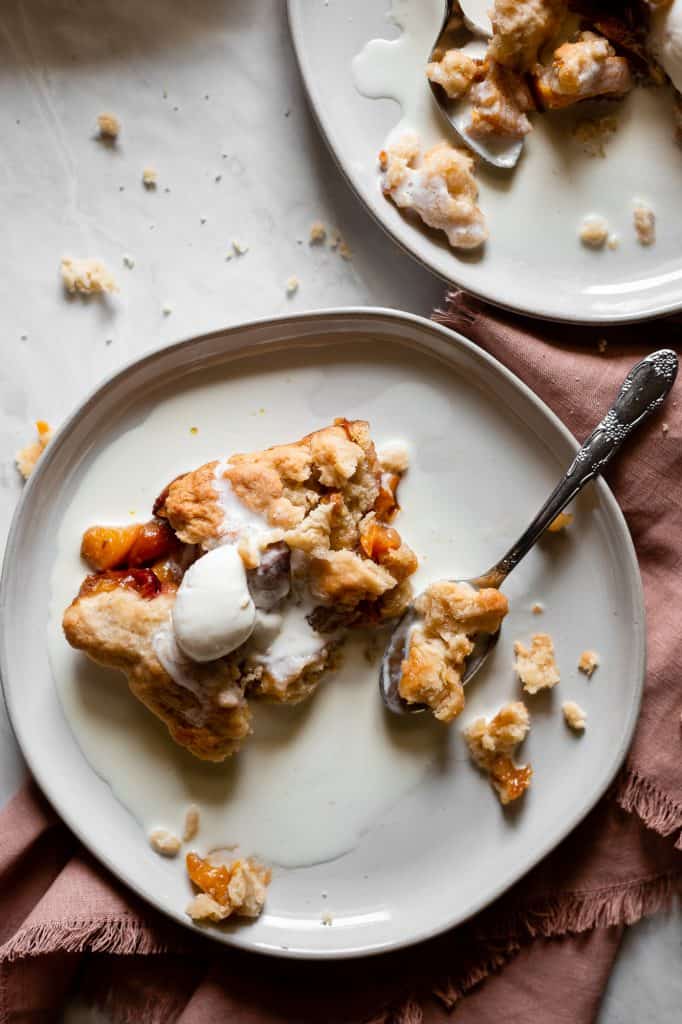
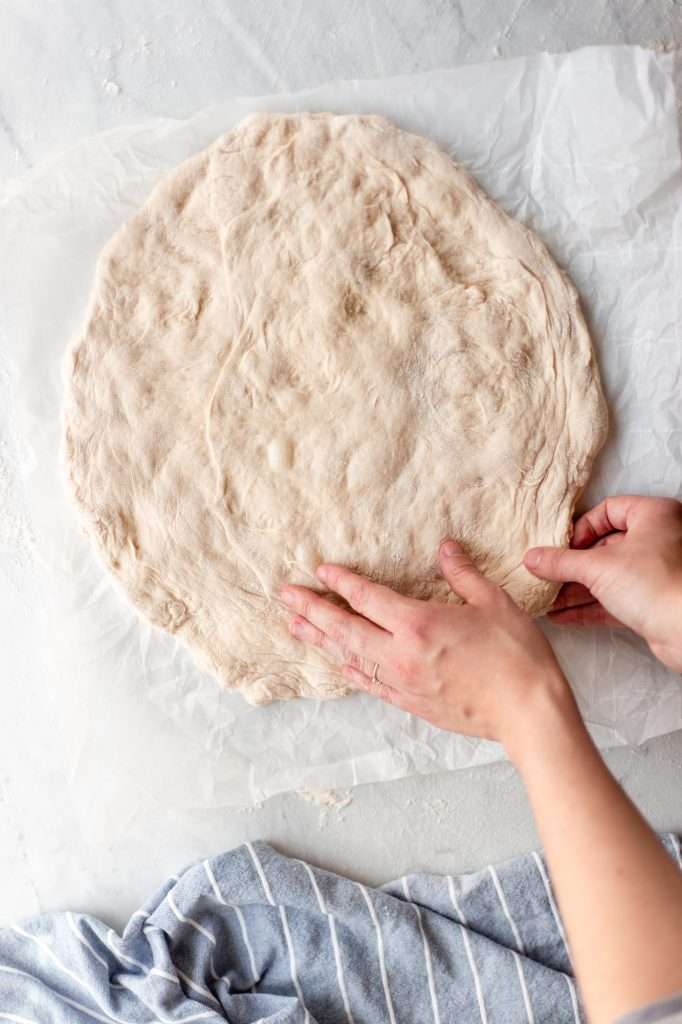

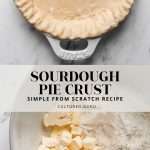


Hello! Can you sub lard for butter in this recipe? Thanks!
Lard should work great!
So, I am on the search for the sourdough recipe for the start shaped biscuits for my son’s advent celebration at school. do you think adding a bit more sugar here and cutting starts of this would eventually work?
Hello, Have you attempted your sour dough pie crust recipe using oil instead of butter, e.g., olive oil or unrefined canola?
No. You cannot use liquid oil to make this pie crust. It needs to be a fat that is solid at room temp like butter, tallow, lard, and maybe coconut oil.
I’m excited to try this recipe! I’ve so much success with others. I’ll need lots of crusts going into the holiday season. I have plenty of discard and was wondering how you would recommend about bulk prepping these. Would it be better if I put them in the freezer for long term storage or fridge?
Freezer is best if you’re prepping now for the holiday season!